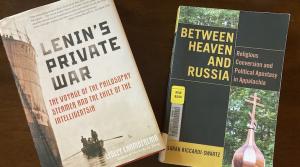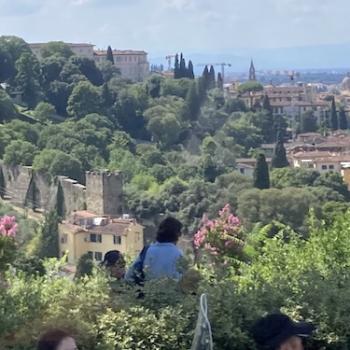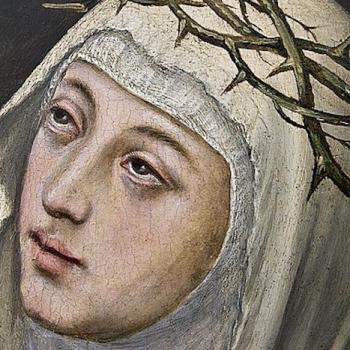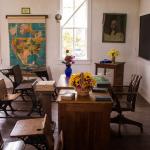
This summer I’ve continued my life-long submersion into Russian theological and intellectual culture. I’ve written previously of the theological disaster that is Patriarch Kirill’s current political stance. A new book by Sarah Riccardi-Swartz, alongside a no longer new book by Lesley Chamberlain, has given me deeper insight into this disaster. Especially as it relates to the U.S.-based ROCOR, or the Russian Orthodox Church outside of Russia.
Orthodoxy in Appalachia
The Riccardi-Swartz book is currently stirring up controversy in the American Orthodox world. In it she, a practicing Orthodox Christian, studies a particular community of Russian Orthodox converts in Appalachia. There she spotlights some elements that many might have preferred to remain on the dark web. I came across the buzz on Twitter. Given my Appalachian family roots and 25 year fixation on Russia, I felt something close to a moral obligation to find out what the noise was about.
It reads like a limited-run Netflix docudrama, if that’s possible thing to say about a piece of religious ethnography published by a university press. Russia has been very much in the U.S. news cycle in the past six years, from election tampering to war-mongering. This book gives us a deeper context that few of us know. I’ll summarize.
The Philosophy Steamer
Shortly after the Bolshevik revolution in 1917, Lenin exiled long lists of intellectuals—philosophers, scientists, theologians, poets—from Russia. This is a story that Chamberlain tells suberbly in her book about the legendary “philosopher steamer.” The steamer was actually two rented German ships that bore professors and other thought leaders abroad.
My hero, Sergei Bulgakov, was among the exiles. He was not, that is, a passenger on either, as he was teaching in Odessa at the time. The secret police were not yet organized enough to track him down. But he and his family followed a couple months later, never to return.
The exiles made their way along the Baltic coastline to Germany. From there they scattered to Prague, Paris, and other cities of Europe and America.
Russians Abroad
Casting out the dissenting intellectuals had many of the effects that Lenin hoped it would. It consolidated the artistic, journalistic, ecclesiastical, and ideological cultures of the nascent Soviet Republics. It inspired fear among anyone tempted to dissension. After all, literary greats like Semyon Frank, Nikolai Berdayev, Andrei Bely, young Vladimir Nabakov, and Tolstoy’s daughter hadn’t withstood Bolshevik supression. Neither had priests and theologians like Georges Florovsky and the entire Lossky family. If all these were expendable, who was safe?
Lenin’s move also had unanticipated effects, however. These were powerful minds (and egos) that he shipped out across the globe. Groups and subgroups developed, intellectual think tanks devoted to preserving something of pre-revolutionary Russia, forming a kind of shadow Russia in anticipation of an eventual fall of the Soviets.
ROCOR
For Christianity, this culturally immigration involved the founding, in the United Staes, of ROCOR. Their clearly stated purpose, until 2007, was to practice an authentic Russian Orthodoxy, awaiting a time of re-evangelization of their post-atheist homeland. They conserved the old medieval idea of Holy Rus as the eternal Rome, the guardian of Christianity until the return of Christ. This political theology is still operative in Moscow’s invasion of Ukraine.
This is not the only organization of Russian Orthodox Churches in the U.S. The larger Orthodox Church in America (OCA) migrated into the lower 48 from Alaska generations before the Revolution. Tensions grew, and remain, between these two in particular, tensions based in part on their founding narratives. ROCOR was birthed in a crisis and more or less remained in that crisis, while OCA has had centuries to shape itself and adapt to a changing religious and geopolitical landscape.
Things changed in 2007. That’s the year that ROCOR consolidated with the Moscow Patriachate of Russian Orthodox Church. This, in effect, completed their mission, reconnecting them with the Russia that they were fighting to preserve. And of course it raised a pressing new identity question.
Who is ROCOR now?
At this point, as Riccardi-Swartz tells the story, ROCOR turned its attention to the U.S. Until then, the U.S. had been more or less a greenhouse, an environment to grow sprouts intended for transplanting back home. But if the Soviet crisis was over, the secularization crisis in America was not. Communities like the one she embedded herself in began to find their calling in bringing that same pre-revolutionary Rus nostalgia to America.
In its most extreme versions, this zeal is quite alarming. She cites prayers composed that look to Tsar Nicholas II as a messianic figure. Liturgical celebrations tell a warped history, whereby the Virgin Mary is holding back the apocaypse until Nicholas—posthumously— can spread Christianity around the world.
She even cites a popular belief that the Tsar’s mantle has fallen to Vladimir Putin. The monks at the West Virginia monastery celebrate Putin in iconography, and some even hope that he will invade the U.S. and bring an Orthodox dictatorship–or monarchy– to these shores. Opinions were divided on Donald Trump, but there was general agreement that his partnership with Putin was a step in a God-ordained direction.
Sources of ROCOR’s Political Theology
The sources of this poltical theology are various. The popular Californian monastic Seraphim Rose, about whom I first began hearing during my first stay in Russia in 1996, is a key figure in the theology and spirituality of ROCOR. Especially important is a speech he gave in 1982, suggesting Tsarist Russia as a model for world Christianity.
Another—and much more suprising— source is the ubiquitous Jordan Peterson. Peterson is a currently active Canadian psychologist who left the academy to become a far right Social Media influencer. So now black robed West Virginian monks, comprised largely of ex-evangelical men in their 20s and 30s, gather around one another’s phones to watch Peterson diatribe on Youtube against Communists, postmodernists, and transgendered persons.
Like I said: a world so weird it’s already Netflix-ready.
Sorting through the Fog
These scholars are helping us name and understand some of the more baffling aspects of this moment in world Christianity. Why have so many looked the other way, or even applauded, as the Kremlin manipulates elections around the globe? Why has a major body of Christianity perverted centuries of deep and scripturally-sound theology into a celebration of warmaking? What is happening in religiously conservative America, once so rabidly resistant to Russian influence, as it now seemingly welcomes the most nefarious in-reaches of Moscow?
None of these questions have simple answers. But these two books will definitely aid us in our moment of religious and political confusion.










